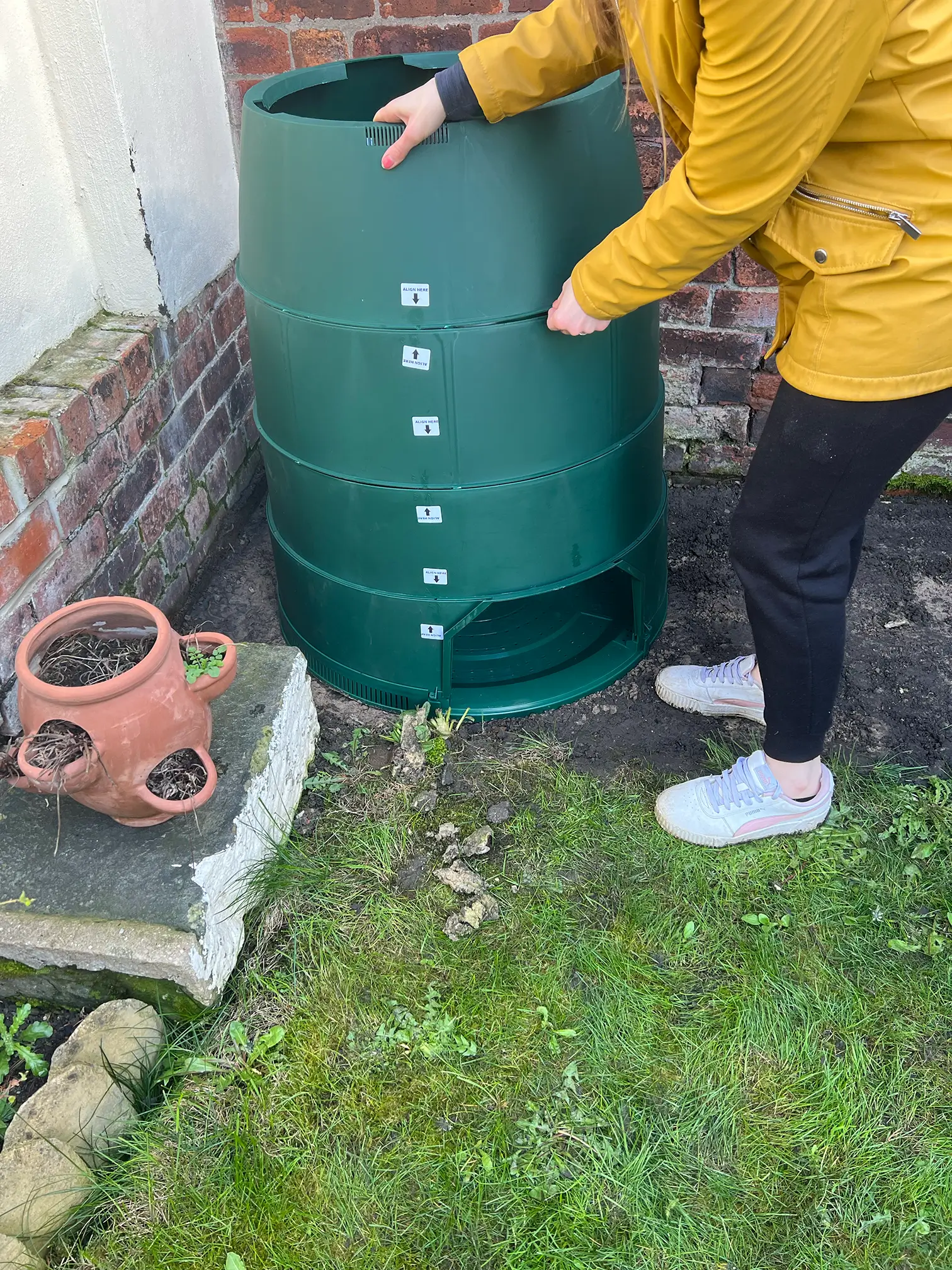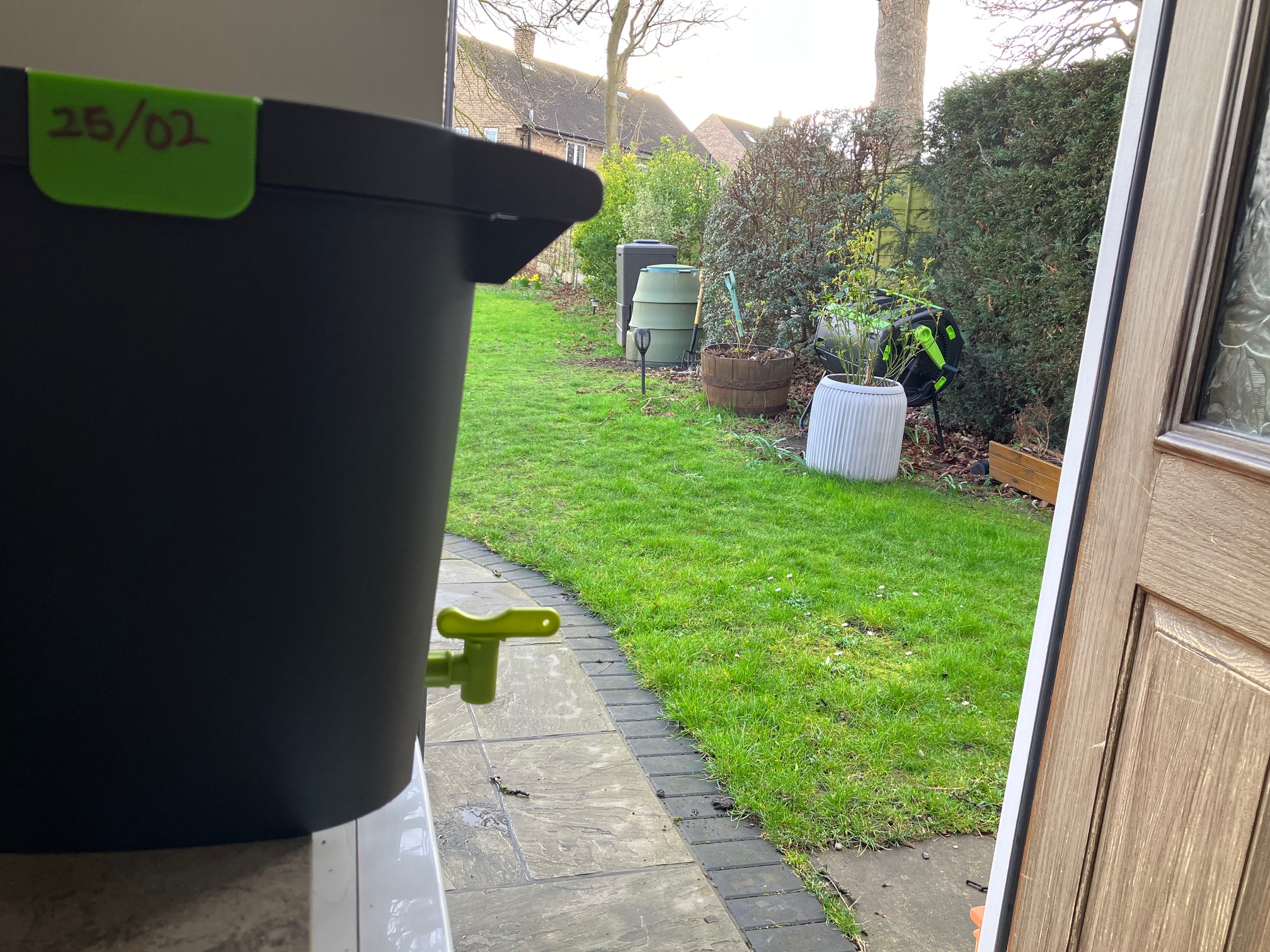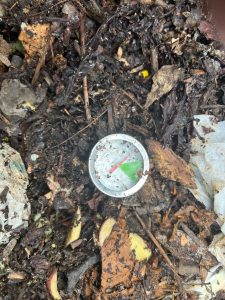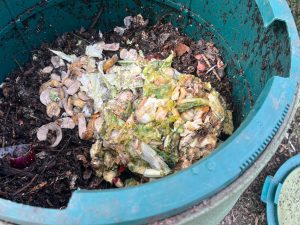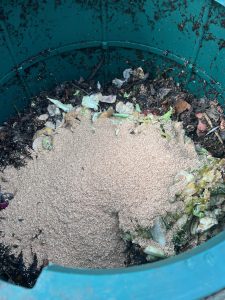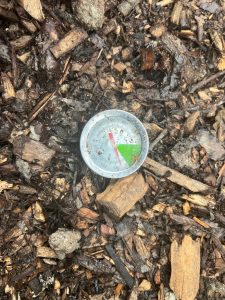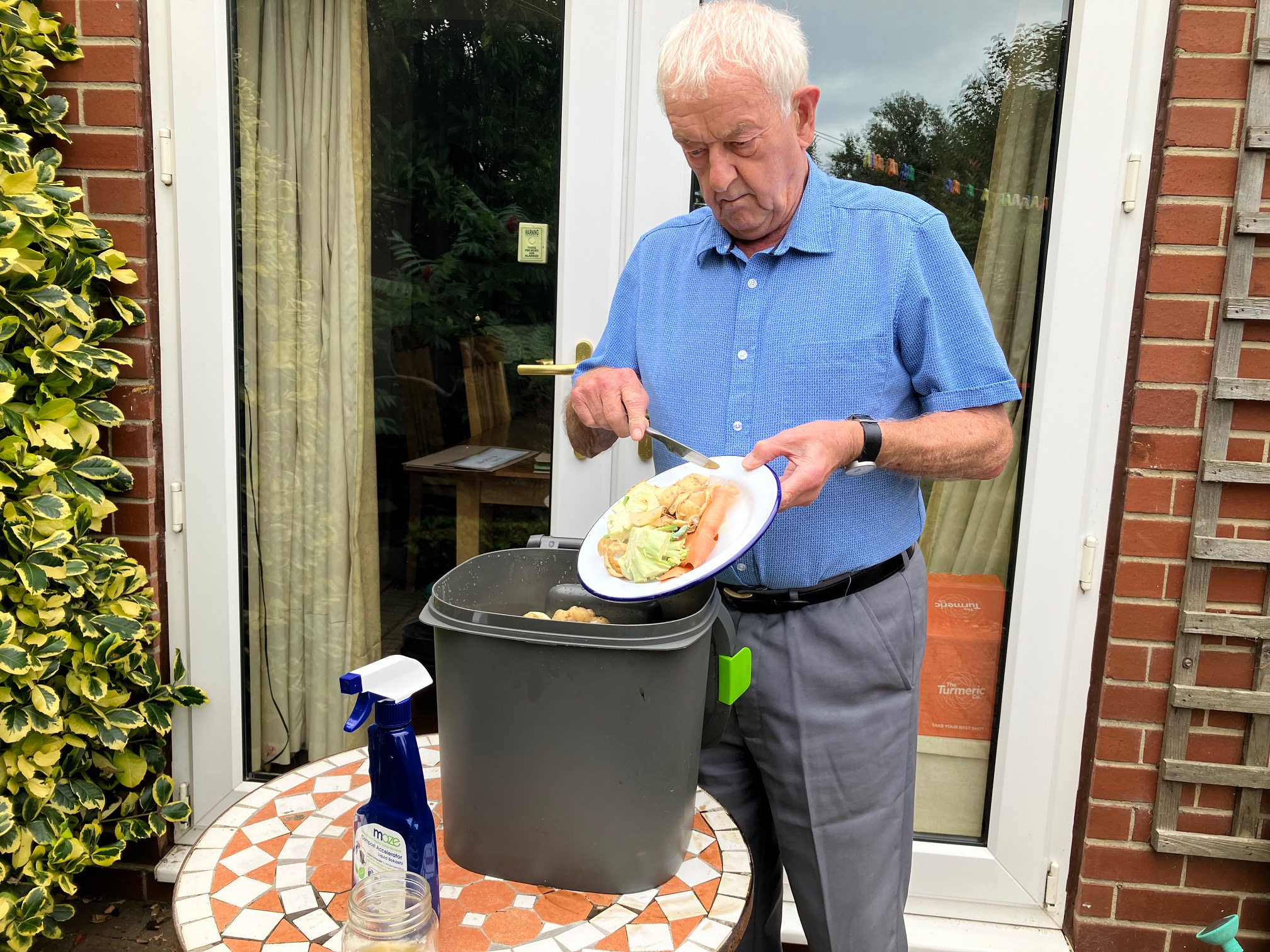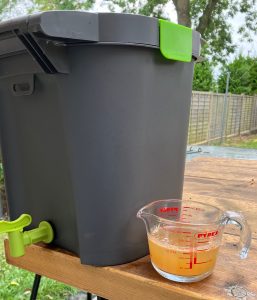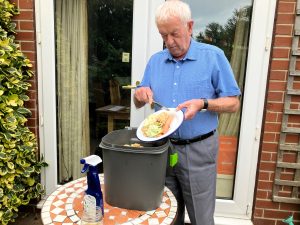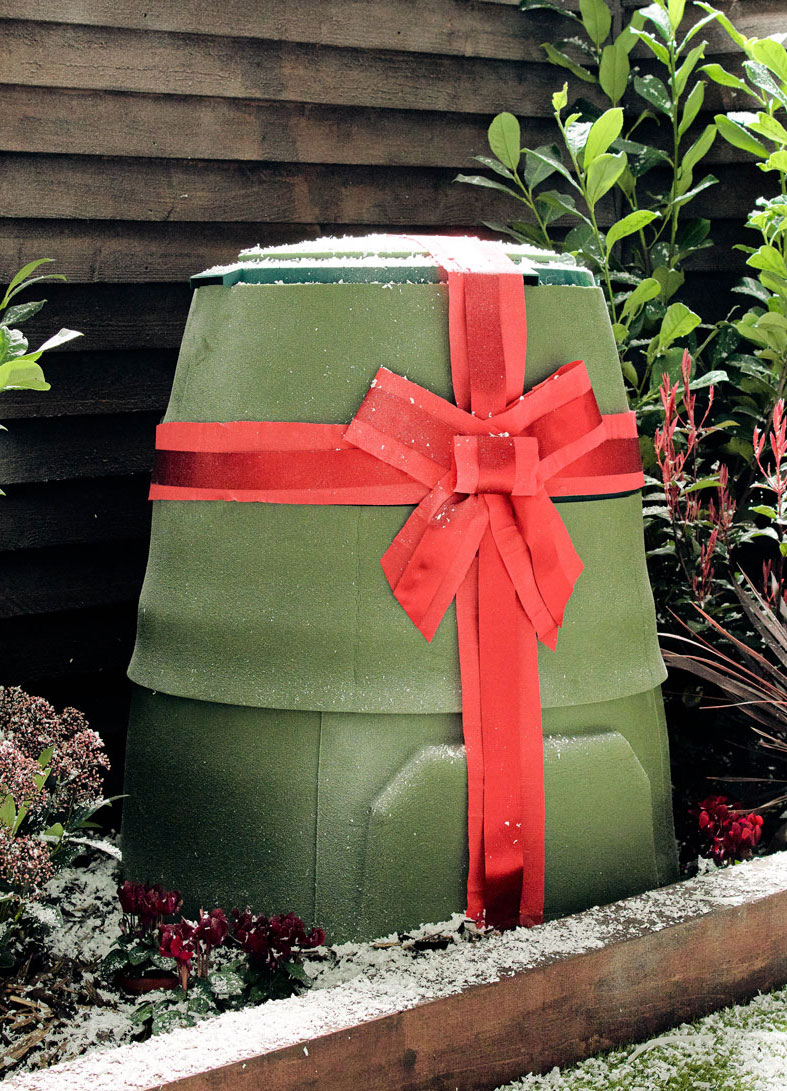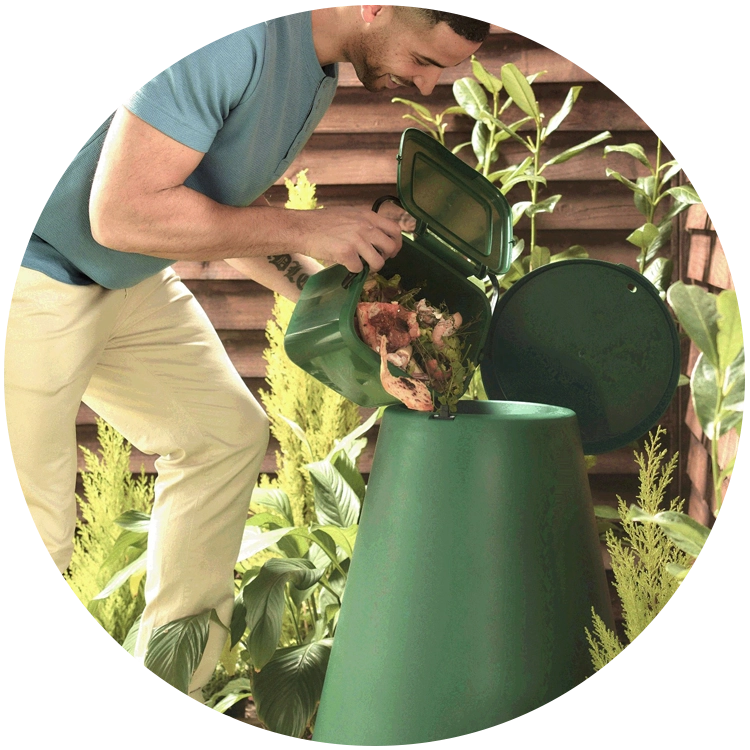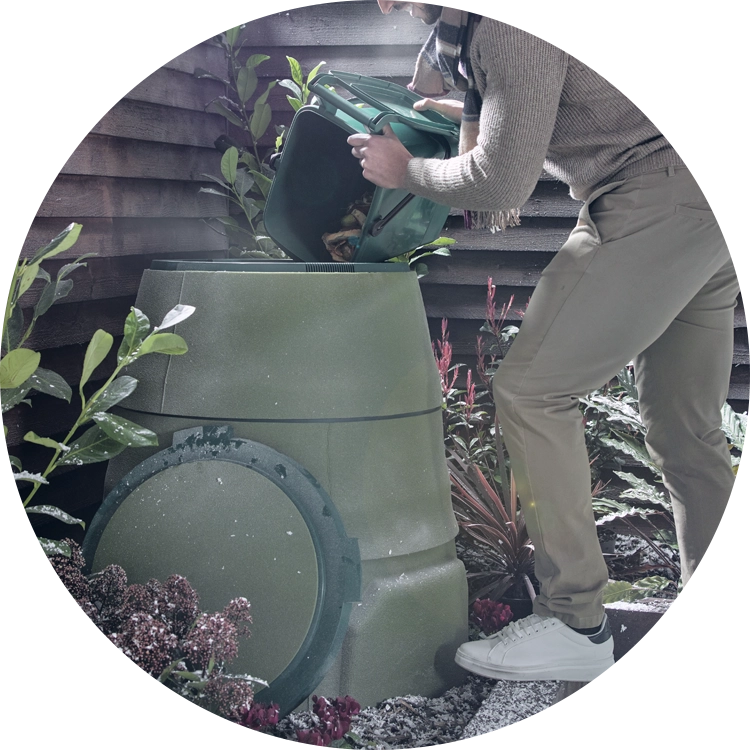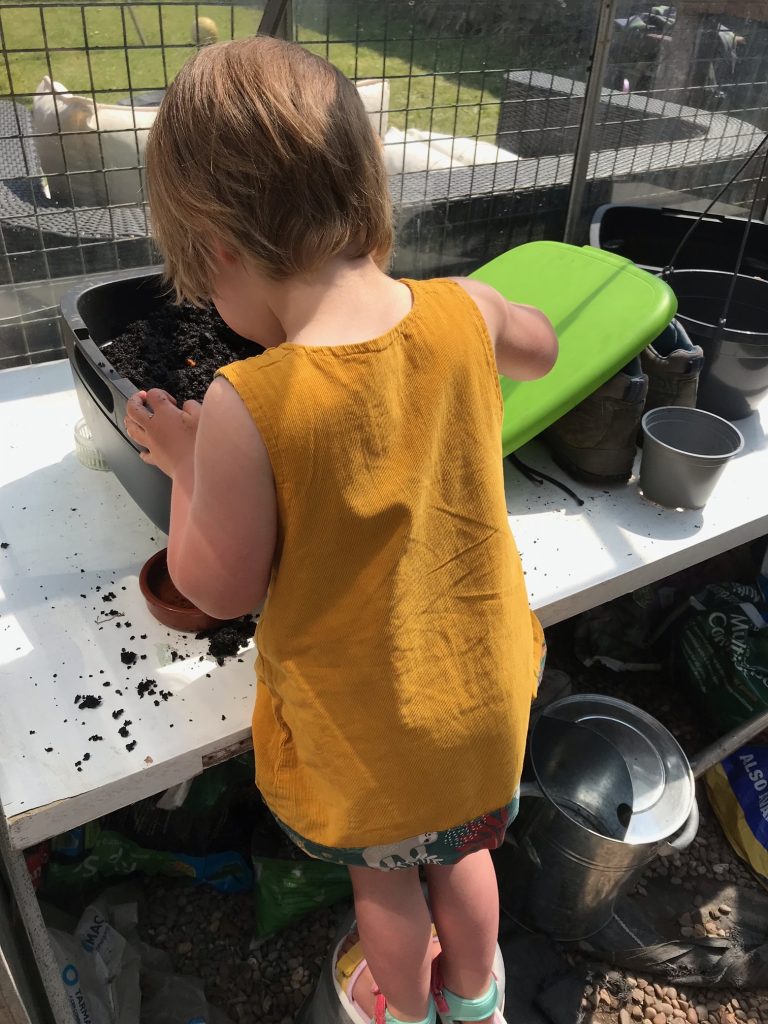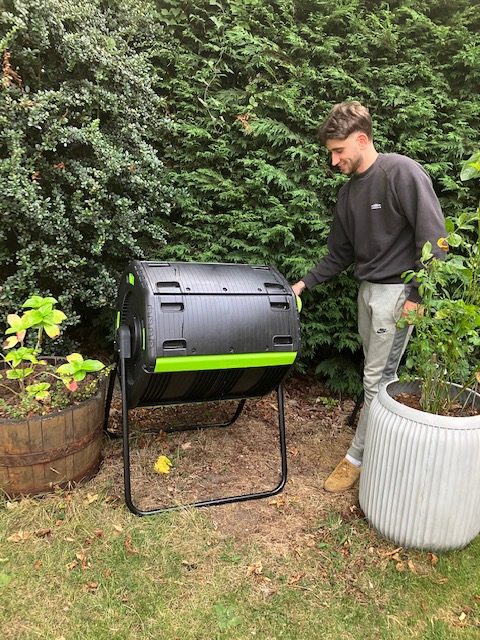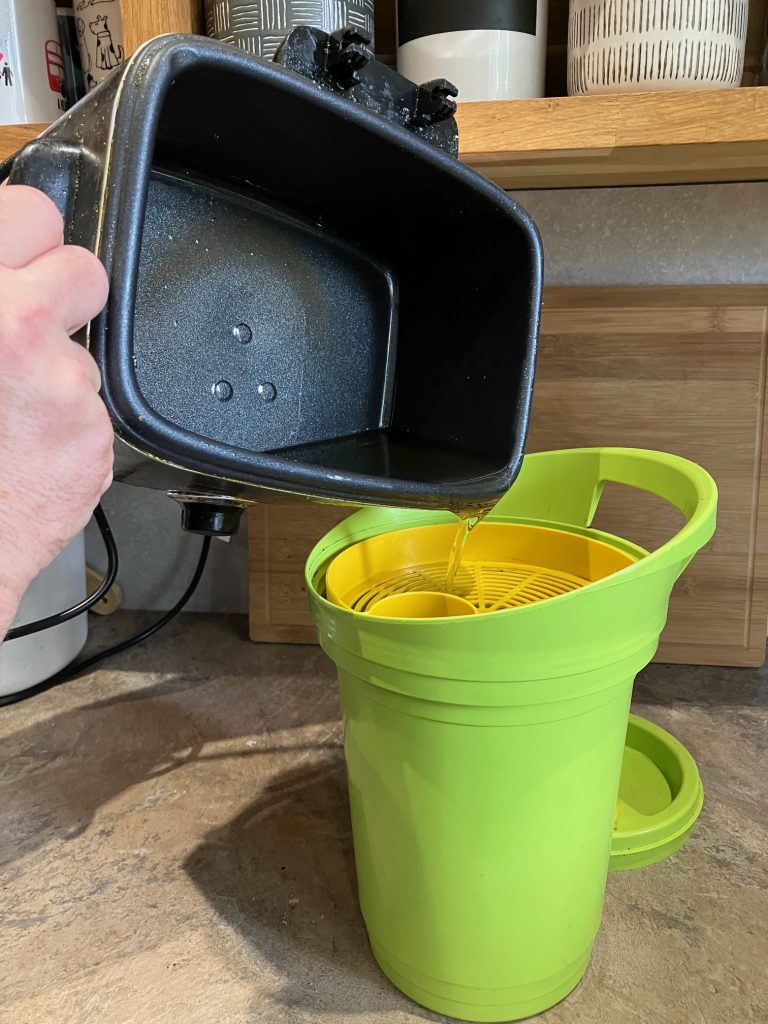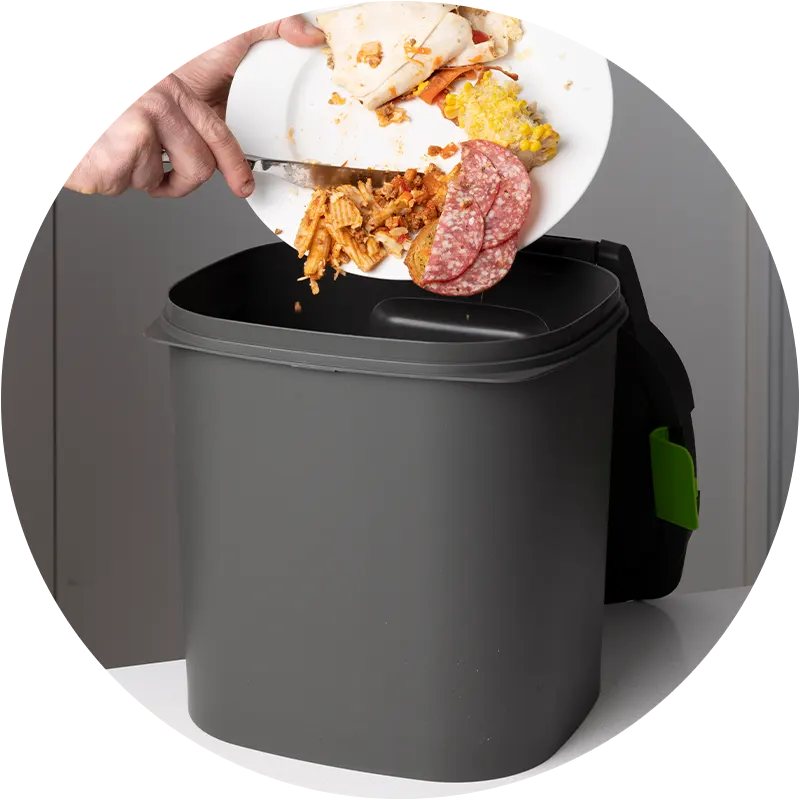This week we caught up with Adam and Hayley who are first-time users of a Green Johanna.
They set up their Johanna in their back garden back in April. The couple had been keen to compost for years and had tried a couple of times with different composters but been disappointed with the results.
Their reasons for composting were that they wanted to recycle their food and garden waste as well as produce their own compost to grow their own vegetables.
Adam said: ‘We have quite a big garden and a lot of garden waste to put to good use, such as branches, leaves etc. We also wanted a good place to put our food waste. We grow potatoes and other vegetables in the garden in large planters.’
They’ve been using the Johanna with an insulating jacket and in combination with a Bokashi bin. Bokashi bins are waste containers that ferment – rather than decompose – food waste thanks to the addition of beneficial anaerobic microbes in a spray or bran. Once full, the bin is sealed and left to ferment for around two weeks to become a pre-compost mixture which is then added to a composter or buried in soil in the garden.
‘It’s become a really useful part of our composting process,’ said Adam. ‘We put all our food waste straight into it and give it a few sprays of Bokashi spray, then once it’s full and has been left to ferment we transfer it to the Johanna.’
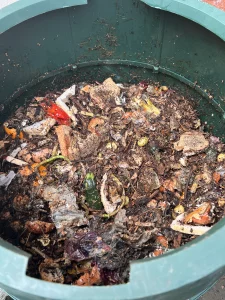
ABOVE: Contents of the kitchen caddy added to the Johanna.
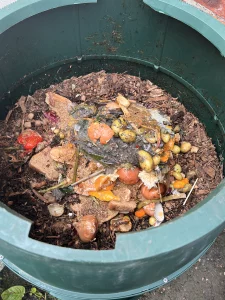
ABOVE: The Bokashi bin’s contents added to the Johanna. The contents of a Bokashi bin after two-weeks’ fermentation don’t appear much different; there will usually be a pickled smell. When added to a compost bin the pre-compost mixture acts as an accelerator – heat increases and the composting process speeds up.
Adam and Hayley are a household of two, both vegans, and it takes around one to two weeks for them to fill the Bokashi bin. Their waste is mainly vegetable scraps along with some beans. They then use their smaller kitchen caddy to take food waste to the Johanna ‘whilst the Bokashi bin is doing its thing.’
They used some Bokashi bran in the Johanna when they were starting out to give the contents an initial boost but haven’t felt the need to use more since. Some people use it throughout the year to keep giving their compost an accelerating boost thanks to the presence of beneficial microbes in the bran.
While they haven’t used a thermometer to check the compost temperature, they’re having a lot more success with the Johanna than with other composters they tried in the past.
‘The Johanna is much better built and seems to be working faster at breaking down all the waste,’ said Adam. He added there had been no problems with flies or rodents.
Their garden waste provides them with more than enough carbon content (Browns) but they have also added shredded waste paper.
If you lack garden waste it’s a good idea to store shredded paper or cardboard, wood chips or sawdust in lidded containers nearby so that they can be added at the same time as adding food waste to get a good balance of nitrogen-rich Greens and carbon-rich Browns as compost materials You may be able to find a local tree surgeon who is willing to drop wood chips off for free.
So far, Adam and Hayley are happy composters and are waiting for the big reveal – accessing their first batch of compost! Watch this space…


